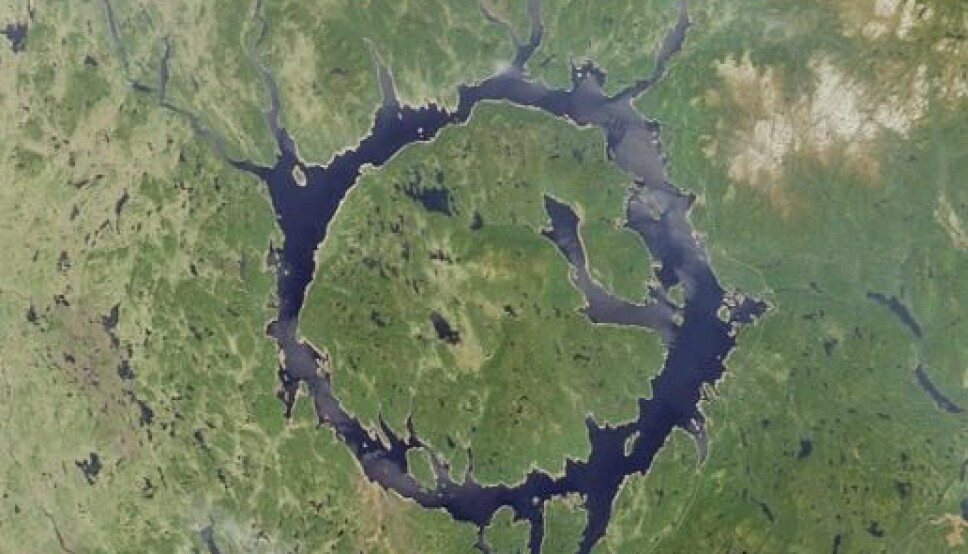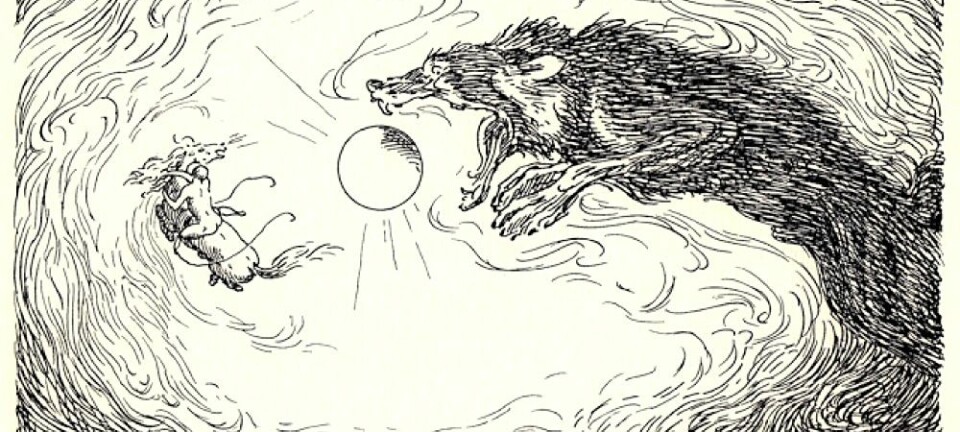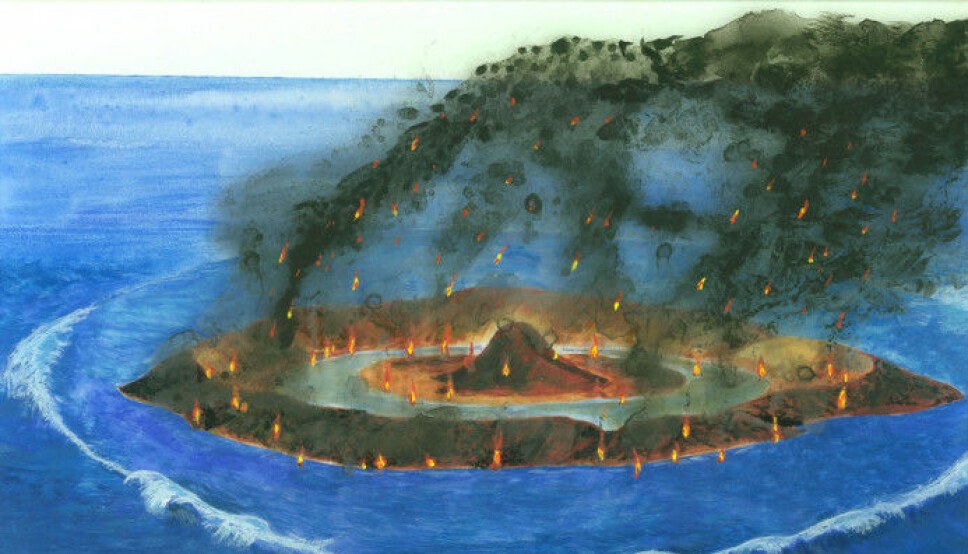
When a several-hundred-metre-high tsunami hit Northern Norway
Scientists know more and more about the giant meteorite that crashed into the sea between Finnmark and Svalbard millions of years ago. And about the huge wave that washed over northern Norway.
Roughly 142 million years ago, a 1.6-km diameter meteorite came hurtling through the atmosphere and crashed into the Barents Sea.
The crater it created at the bottom of the ocean was 40 kilometres wide. The rocks on the seafloor were crushed as far down as several kilometres.
Geologists at the University of Oslo (UiO) discovered what was to turn out to be one of the largest impact craters in the world in the 1990s. Since then, researchers have studied the explosion itself, the huge crater that was formed, wildlife and fauna after the explosion — and the giant wave that hit Norway and Greenland because of the impact.
The Mjølnir crater may in fact be one of the best-preserved meteorite craters on Earth. Today it is also a crater that scientists have learned a lot about.
The seabed was set on fire
“The crater is currently at a depth of 350 metres and is extremely large. It is the 20th largest in the world,” says Henning Dypvik, a professor of geology at UiO.
“One of the most special things we have discovered is that the violent explosion actually caused the seabed to burn. A giant fire on the seabed may have lasted for more than 20 minutes, before the seawater returned and put it out,” he said.
“This is pretty cool stuff,” the professor says.
He says researchers have discovered soot from the huge Mjølnir fire as far away as Siberia.
It’s no wonder, considering that the equivalent of 30 million cubic metres of oil were incinerated in the destroyed bedrock, according to calculations by the UiO researchers.
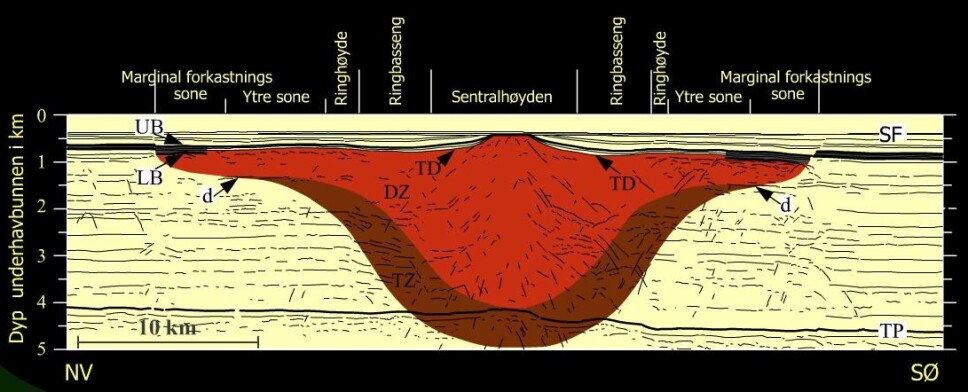
Meteorite craters on the seabed
Fully 70 per cent of the Earth's surface is covered by water.
That means it’s most likely that the majority of large meteorites that collided with the Earth must have formed craters below the sea surface. This makes the extensive Norwegian research on the Mjølnir Crater in the Barents Sea relevant in several places in the world.
“The Mjølnir research has provided us a lot of new knowledge about what happens when a meteorite hits the sea. We not only know more about crater formation, but also about tsunamis, bottom currents, and rockslides and landslides,” says Dypvik.
Both asteroids and comets can collide with Earth and can be several kilometres in diameter. For simplicity’s sake, we call them all meteorites. The Mjølnir meteorite was probably an asteroid. It hit our planet at a speed of 20 kilometres per second.
Both asteroids and comets are remnants from the formation of our solar system about 4.5 billion years ago. Sometimes one of these interplanetary projectiles may strike a planet or a moon.
Global warming or global cooling?
When meteorites as large as Mjølnir strike the Earth, the meteorite itself is completely lost in the violent explosion. It simply evaporates.
Consequently, there is no direct evidence of the giant that hit the Barents Sea 142 million years ago. This is in contrast to small meteorites, which can survive the trip to the Earth's surface and many of which have been found over the years.
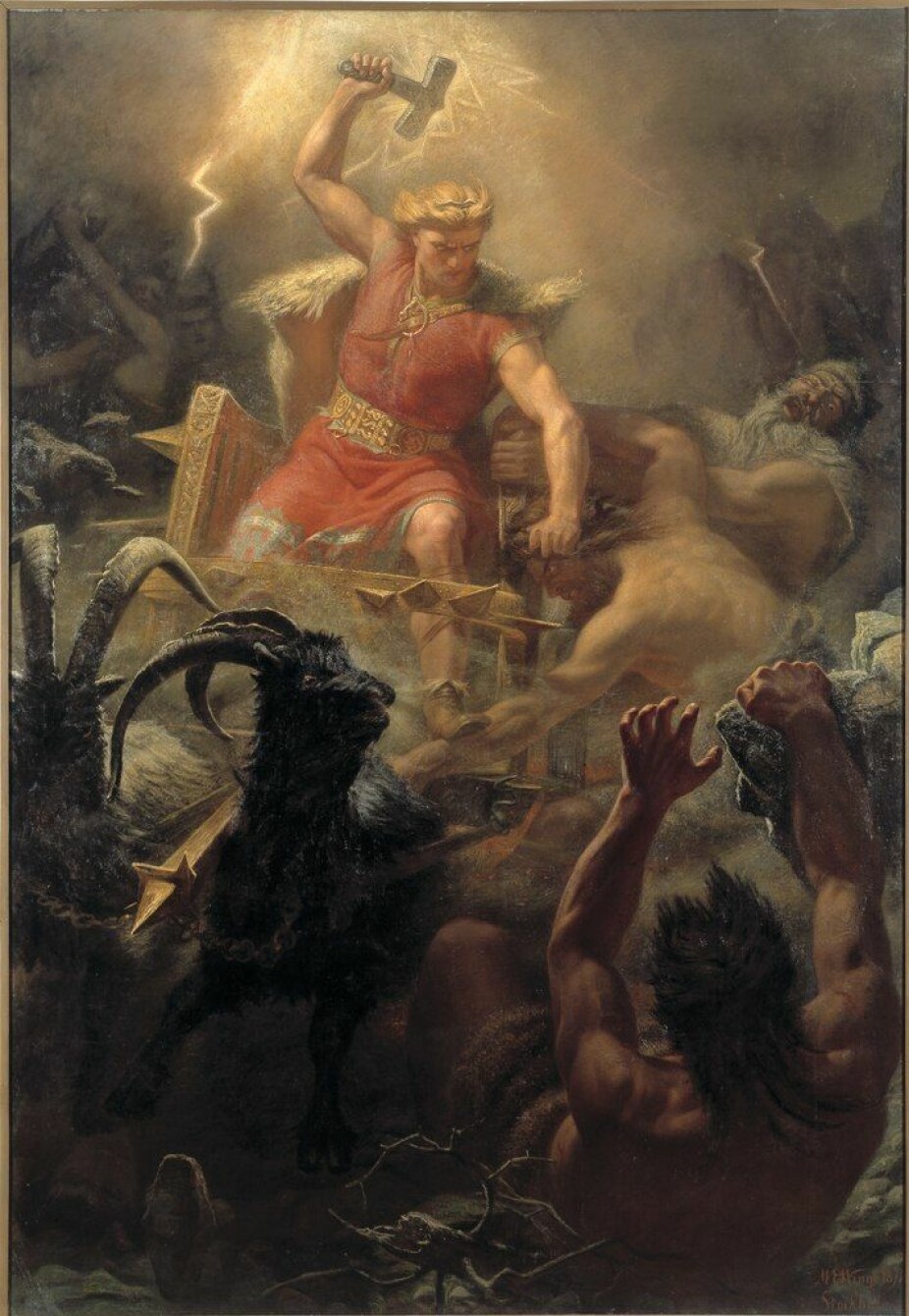
The temperature and pressure at the moment of impact must have been tremendous. Scientists know this from the deformation in the Mjølnir crater. There, the researchers have drilled down twice and taken samples of the rock.
Giant meteorites may have led to the extinction of the dinosaurs and led to many other changes across geological time. Maybe some of them released so much water vapour into lower parts of the atmosphere that the Earth experienced an accelerated greenhouse effect and global warming. Or perhaps the dust they created was ejected into the stratosphere so that the Earth experienced global cooling.
Researchers are still speculating about which scenario is more likely.
A tsunami hundreds of metres high
One thing scientists are more certain about is the giant tsunami that was created by the Mjølnir meteorite.
A few decades ago, Sylfest Glimsdal was one of Norway's best biathletes. Today he is a senior specialist at the Norwegian Geotechnical Institute (NGI) and the person who perhaps knows the most about the Mjølnir tsunami.
“The sea was ‘blasted away’ when the meteorite hit,” he said. “The water column that was formed may have been over a kilometre high.”
“Simulations have allowed us to discover that some very special waves are formed when large meteorites hit the water surface. A ‘wave train’ is created by what are called solitary waves, away from the point of impact. The highest wave is the first and is then followed by waves of decreasing height,” he said.
Glimsdal has also studied what happens when the waves from the impact hit land.
“The coast of Finnmark was hit by a tsunami that may have been several hundred metres high. Greenland and parts of northern Russia were also affected. Further south along the coast of Norway, the tsunami was perhaps a hundred metres high,” he said.
Glimsdal says that tsunamis that result when giant meteorites strike the sea have a completely different and much greater effect than tsunamis that occur because of earthquakes, for example.
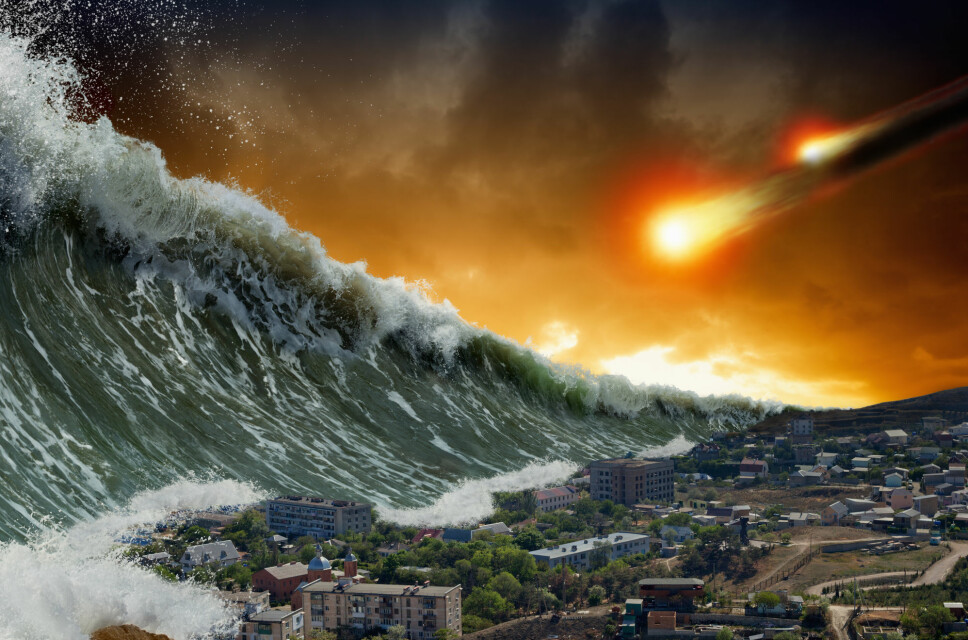
Explosive algae bloom
A giant meteorite that hit the Yucatan Peninsula in Mexico 66 million years ago is probably what caused dinosaurs to go extinct. There is no sign that the Mjølnir impact resulted in that level of destruction for the Earth’s animal species.
Researchers have been able to establish that Mjølnir did not create a global ecological crisis.
But locally, the consequences for marine animal and plant life must have been enormous. In one of the boreholes the researchers drilled into the crater, they found traces of what may have been a lot of dead fish.
The violent mixing of the seawater, however, had another very special effect. Huge amounts of nutrient-rich bottom sludge swirled up into the water column. Suddenly the ocean was full of nutrients such as nitrate, phosphate and iron.
Morten Smelror, a researcher at the Norwegian Geological Survey (NGU) and his colleagues have found traces of an explosive bloom of a tiny alga.
In the sediments that were formed inside the Mjølnir crater itself right after the explosion, the researchers have found enormous amounts of these algae — half a million “resting” spores per gramme of sediment from an algae in the genus Leiosphaeridia. The researchers believe that this very special algae bloom spread over most of the Barents Sea.
Translated by: Nancy Bazilchuk
Sources and references:
Sylfest Glimsdal et al.: “Tsunami Generated by the Mjølnir Impact”, Lunar and Planetary Science, 2005
Dypvik, H., Tsikalas, F. and Smelror, M. (Eds.) 2010. The Mjølnir Impact Event and its Consequences. Springer Verlag, 318 pp.
———
Read the Norwegian version of this article on forskning.no








